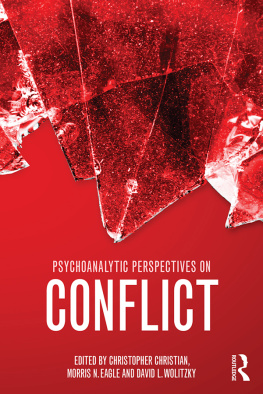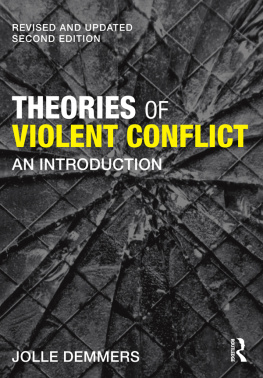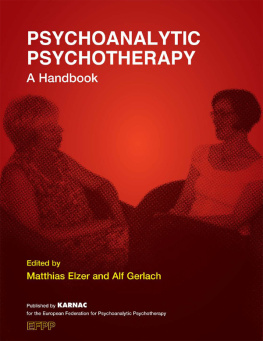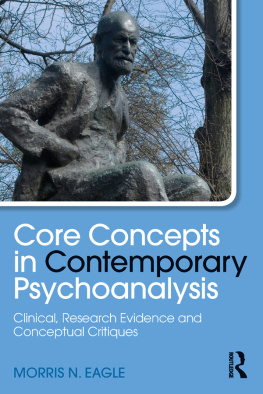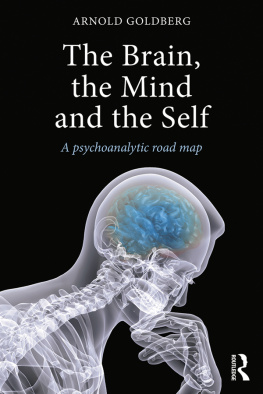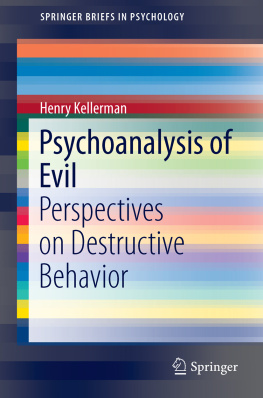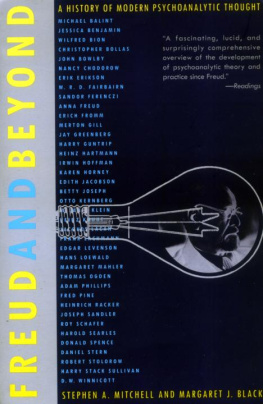First published 2017
by Routledge
2 Park Square, Milton Park, Abingdon, Oxon OX14 4RN
and by Routledge
711 Third Avenue, New York, NY 10017
Routledge is an imprint of the Taylor & Francis Group, an informa business
2017 selection and editorial matter, Christopher Christian, Morris N. Eagle and David L. Wolitzky; individual chapters, the contributors
The right of the editors to be identified as the authors of the editorial material, and of the authors for their individual chapters, has been asserted in accordance with sections 77 and 78 of the Copyright, Designs and Patents Act 1988.
All rights reserved. No part of this book may be reprinted or reproduced or utilised in any form or by any electronic, mechanical, or other means, now known or hereafter invented, including photocopying and recording, or in any information storage or retrieval system, without permission in writing from the publishers.
Trademark notice: Product or corporate names may be trademarks or registered trademarks, and are used only for identification and explanation without intent to infringe.
British Library Cataloguing in Publication Data
A catalogue record for this book is available from the British Library
Library of Congress Cataloging in Publication Data
Names: Christian, Christopher, editor. | Eagle, Morris N., editor. |
Wolitsky, David L., editor.
Title: Psychoanalytic perspectives on conflict / edited by Christopher
Christian, Morris N. Eagle and David L. Wolitzky.
Description: 1 Edition. | New York : Routledge, 2016. | Series: Psychological
issues | Includes bibliographical references.
Identifiers: LCCN 2016009963 | ISBN 9781138795204 (hardback) |
ISBN 9781138795211 (pbk.) | ISBN 9781315758589 (ebook)
Subjects: LCSH: Psychoanalysis.
Classification: LCC BF173 .P77634 2016 | DDC 150.19/5dc23
LC record available at https://lccn.loc.gov/2016009963
ISBN: 978-1-138-79520-4 (hbk)
ISBN: 978-1-138-79521-1 (pbk)
ISBN: 978-1-315-75858-9 (ebk)
Typeset in Times New Roman
by Apex CoVantage, LLC

From its beginnings psychoanalysis regarded conflict as inevitable, ubiquitous, and centrally implicated in the formation of symptoms and of character. Indeed, E. Kris (1947) described psychoanalysis as the view of mental life from the perspective of intrapsychic conflict. Kris made this comment at a time when the practice of many analysts comprised so-called classical (neurotic) patients. As we know, in the past several decades there has been a widening scope of psychoanalysis (L. Stone, 1954) in response to the attempt to treat patients beyond the neurotic range (e.g., borderline and narcissistic patients). This development led to new views concerning the centrality of dealing with conflict in treatment.
Much more recently, we saw an attempt to reassess the role of conflict reflected in the fact that the topic of conflict was selected as the organizing theme at the 2014 Spring meeting of the Division of Psychoanalysis in the American Psychological Association.
The program stated:
Conflict is located at every layer of our experience whether conceptualized with the structural or topographic models, intersubjectively determined emotional experience, the impact and constrictions of social norms and social traditions, or governments, spiritual beliefs, nations, and between factions of psychoanalysis. Conflict is a foundation of human suffering, familial in-fighting, membership and alienation, violence and war; while equally fundamental to clarification, contextualization, illumination, celebration of differences, resolution and peace.
Having decided that it was timely to survey current views of conflict, we invited authors with diverse views regarding conflict to discuss the topic in terms of their theoretical and clinical perspectives. To set the stage for the chapters that follow, we start with a list of core questions that one or more of the contributors have addressed and that are important to a contemporary psychoanalytic appraisal of the role and nature of conflict. These questions include the following: (1) Is conflict inherent in the human condition, present from birth? Or does it emerge mainly as a function of environmental failure of one sort or another? (2) What are we conflicted about? Are conflicts about sexual and aggressive wishes primary? Or are conflicts about other needs, wishes, and desires at least as important? (3) Is inner conflict at the center of psychopathology? Or are there forms of psycho-pathology in which inner conflict is not primary? (4) Should a focus on inner conflict be at the center of our therapeutic approach? Or are there other foci that are equally important? (5) What is the most effective way to address inner conflict in the clinical situation? (6) Is a conceptualization in terms of conflict among different structures of the personality the most useful way to understand inner conflict? (7) Are there empirical studies on conflict outside the clinical situation that broaden our understanding of the nature of conflict?
We will summarize briefly each of the chapters and for each contribution note the aforementioned issues that are addressed. Virtually all the authors seem to agree that conflict is a central aspect of psychic life and that it plays an important role in treatment. However, there are different views regarding how conflict is defined, the origins of the conflicts, their centrality in the patients symptoms and personality style, and how they should be approached in treatment.
In this Introduction, our aim as editors is not to present a detailed summary of all the major points in each chapter. Rather, we want to identify central themes in each of the chapters in order to give readers an idea of what to expect. Readers will see how each author elaborates his or her views of conflict in the context of their particular theoretical perspective. We deliberately invited authors who would represent a wide range of views. In the concluding section of this chapter, we will offer some comments that reflect our sense of some overarching issues that emerge from the authors contributions.
In However, whether these aims are achieved is influenced by the egos appraisal of the relative pleasure versus potential unpleasure likely to accompany the awareness and/or expression of such wishes. Considerations of morality are also important in estimating the balance of pleasure and unpleasure in that the possibility of arousing negative affects such as guilt, shame, or humiliation might be part of the cost of attempting to fulfill a wish. Thus, there are conflicts between the id and the ego as well as between the id and the superego. This view of the mind as consisting of separate agencies was intended to account for the dynamic interplay of the persons incompatible aims. In this drive-defense model of mental functioning, the core neurotic conflict was the Oedipal conflict.
According to S. Freud (1926a), the principle anxieties defended against are what he called the danger situations of childhood and what Brenner (1994) referred to as the calamities of childhood in his presentation of modern conflict theory. The main so-called dangers or calamities are the loss of the object, loss of the objects love, castration anxiety, and superego condemnation. Signal anxiety refers to a warning that initiates the defensive processes in order to avoid a full blown traumatic anxiety.
In short, Freud saw inner conflict as due to the incompatibility between an idea and the ego, which he early on referred to as defense hysteria, the defense being the egos attempt to repress the unacceptable wish. This conceptualization led to the drive-defense model and was applied not only to neurotic symptoms but also to dreams and personality traits and patterns.

